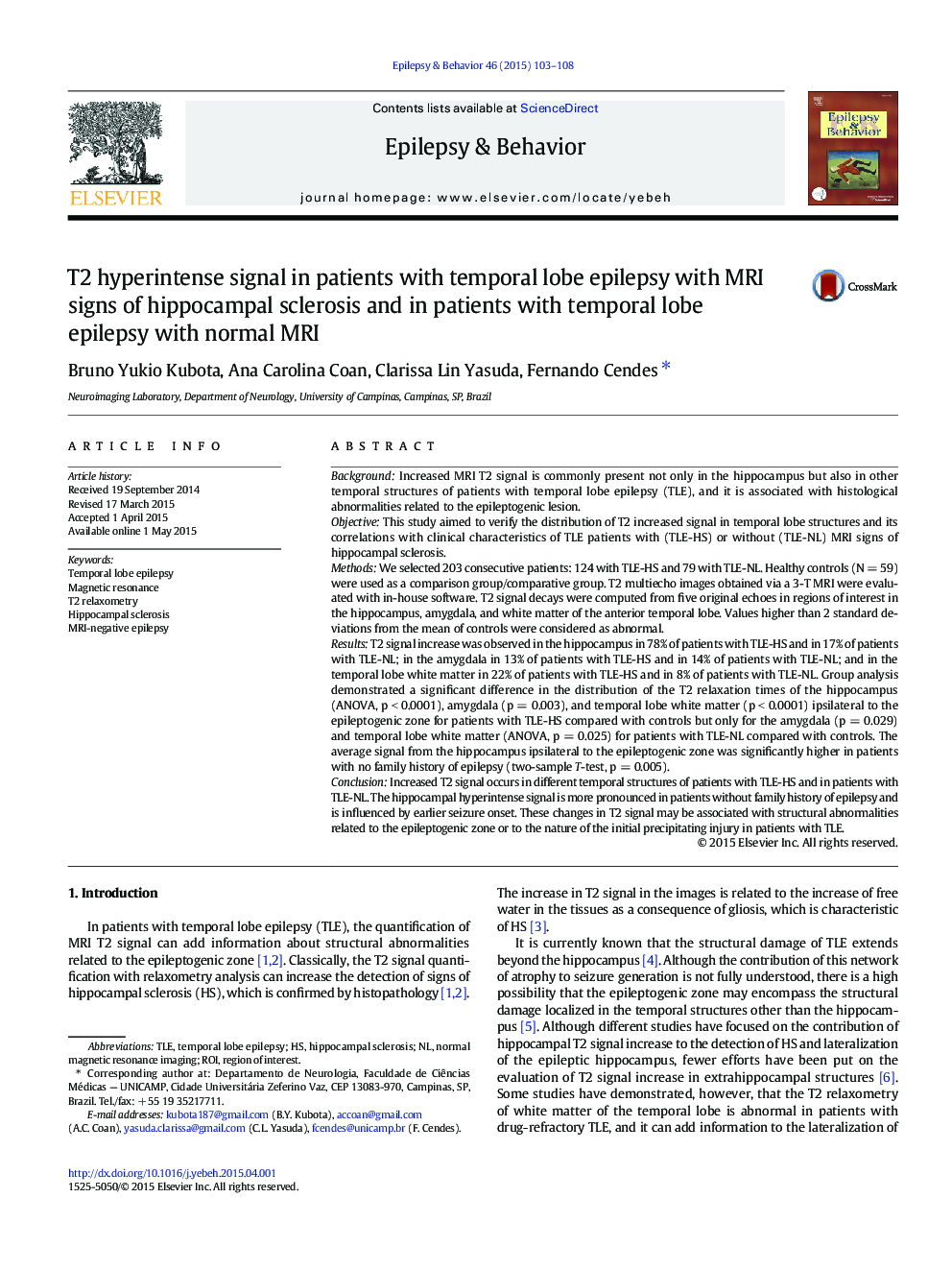| کد مقاله | کد نشریه | سال انتشار | مقاله انگلیسی | نسخه تمام متن |
|---|---|---|---|---|
| 6010943 | 1579843 | 2015 | 6 صفحه PDF | دانلود رایگان |

- Hyperintense T2 signal occurs in patients with TLE with MRI signs of HS and in those without MRI signs of HS.
- It is present in the hippocampus, amygdala, and lateral temporal lobe white matter.
- It is more frequent in patients with TLE without family history of epilepsy.
- T2 relaxometry has low sensitivity (<Â 17%), except for the hippocampus in TLE with HS (75%).
- Specificity is high for all three structures (94-97%) in TLE with HS and in TLE without HS.
BackgroundIncreased MRI T2 signal is commonly present not only in the hippocampus but also in other temporal structures of patients with temporal lobe epilepsy (TLE), and it is associated with histological abnormalities related to the epileptogenic lesion.ObjectiveThis study aimed to verify the distribution of T2 increased signal in temporal lobe structures and its correlations with clinical characteristics of TLE patients with (TLE-HS) or without (TLE-NL) MRI signs of hippocampal sclerosis.MethodsWe selected 203 consecutive patients: 124 with TLE-HS and 79 with TLE-NL. Healthy controls (N = 59) were used as a comparison group/comparative group. T2 multiecho images obtained via a 3-T MRI were evaluated with in-house software. T2 signal decays were computed from five original echoes in regions of interest in the hippocampus, amygdala, and white matter of the anterior temporal lobe. Values higher than 2 standard deviations from the mean of controls were considered as abnormal.ResultsT2 signal increase was observed in the hippocampus in 78% of patients with TLE-HS and in 17% of patients with TLE-NL; in the amygdala in 13% of patients with TLE-HS and in 14% of patients with TLE-NL; and in the temporal lobe white matter in 22% of patients with TLE-HS and in 8% of patients with TLE-NL. Group analysis demonstrated a significant difference in the distribution of the T2 relaxation times of the hippocampus (ANOVA, p < 0.0001), amygdala (p = 0.003), and temporal lobe white matter (p < 0.0001) ipsilateral to the epileptogenic zone for patients with TLE-HS compared with controls but only for the amygdala (p = 0.029) and temporal lobe white matter (ANOVA, p = 0.025) for patients with TLE-NL compared with controls. The average signal from the hippocampus ipsilateral to the epileptogenic zone was significantly higher in patients with no family history of epilepsy (two-sample T-test, p = 0.005).ConclusionIncreased T2 signal occurs in different temporal structures of patients with TLE-HS and in patients with TLE-NL. The hippocampal hyperintense signal is more pronounced in patients without family history of epilepsy and is influenced by earlier seizure onset. These changes in T2 signal may be associated with structural abnormalities related to the epileptogenic zone or to the nature of the initial precipitating injury in patients with TLE.
Journal: Epilepsy & Behavior - Volume 46, May 2015, Pages 103-108